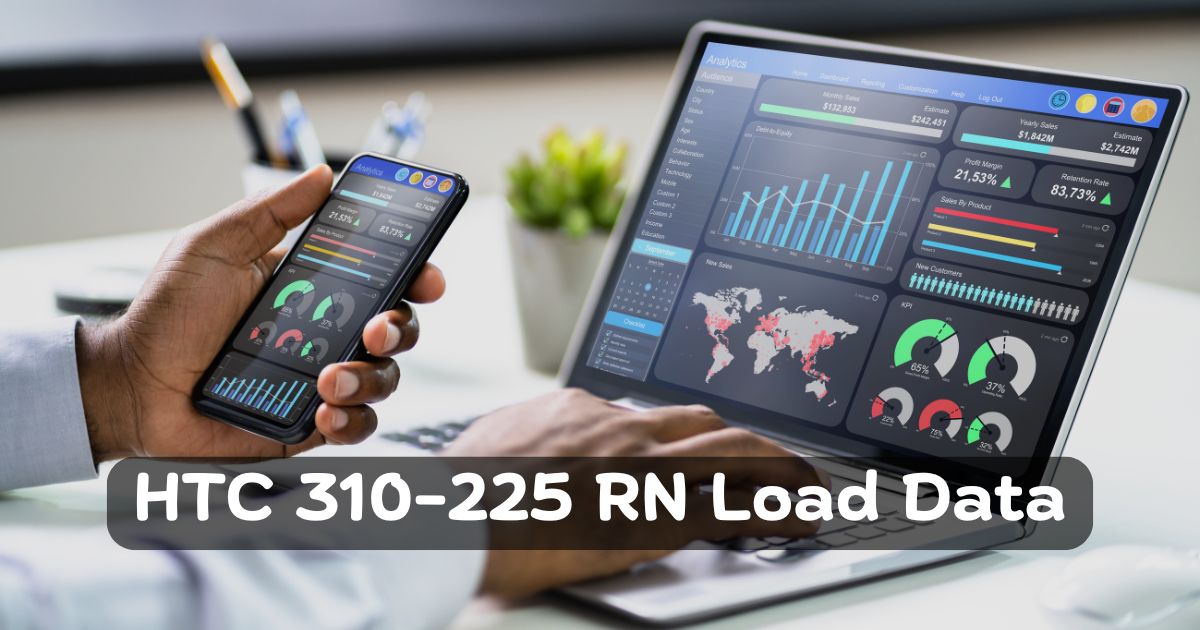The HTC 310-225 RN is an essential device used in various industrial and research applications. It is known for its efficient data management capabilities. Understanding how to load data into the HTC 310-225 RN is vital for maximizing its performance and reliability. Proper data loading ensures that the device operates optimally.
As technology advances, effective data management becomes crucial. The HTC 310-225 RN provides a robust platform for managing and analyzing data. This guide will explore how to load data into this device to leverage its full potential.
What is Load Data?
Load data refers to the transfer of information into a device for processing or analysis. In the context of the HTC 310-225 RN, this includes all files and datasets needed for optimal functionality. Properly loading data is critical for the device’s performance. When data is correctly loaded, users can expect faster processing times and fewer errors.
Conversely, poorly managed load data can lead to malfunctions and inaccurate outputs. Understanding the loading process is essential for effective device use. This knowledge helps ensure reliability and efficiency in data processing tasks.
Why is HTC 310-225 RN Load Data Important?
Understanding HTC 310-225 RN load data is essential for all users. Properly loaded data ensures peak efficiency. When accurate information is available, users can achieve faster processing and reliable functionality. This is crucial in industrial settings, where accuracy is paramount.
Additionally, well-managed load data enhances the reliability of the results obtained. If the information is outdated or incorrect, the outcomes will reflect those flaws. Thus, maintaining up-to-date and accurately loaded data is essential for optimal performance.
Key Features of HTC 310-225 RN Load Data
The HTC 310-225 RN offers several key features that enhance load data capabilities. One major feature is its high-speed data transfer. This allows users to load large datasets quickly and efficiently. This capability is particularly useful in fast-paced environments.
Another critical feature is its user-friendly interface. This intuitive design makes it accessible for users with varying technical expertise. Users can easily navigate the system to load data and retrieve results. The device’s compatibility with various data formats also ensures versatility.
Also Read: HTLK40S5M250-F-12
Steps to Load Data into HTC 310-225 RN
Loading data into the HTC 310-225 RN involves several steps. First, gather all necessary files and ensure they are in a compatible format. Verify that the data is clean and well-organized to facilitate smooth loading.
Next, connect the HTC 310-225 RN to a reliable data source. This could be a computer or a network drive. Use the device’s interface to initiate the loading process, following any prompts provided. After loading, verify that all data has been transferred correctly and is functioning as expected.
Common Issues in HTC 310-225 RN Load Data
While loading data is generally straightforward, users may encounter common issues. One frequent problem is slow loading times. This can result from poor internet connectivity or insufficient device storage. When facing slow loading, check the network and device conditions.
Another issue may involve error messages during loading. These messages often indicate problems like corrupted files or incompatible formats. Addressing these errors promptly is essential to prevent data loss and ensure the device operates correctly.
Troubleshooting HTC 310-225 RN Load Data Problems
Effective troubleshooting is crucial when users experience issues with HTC 310-225 RN load data. Start by ensuring a stable internet connection. Many loading problems stem from poor connectivity. If loading seems slow, check the network status.
If error messages appear, review the data files for corruption. Re-loading the data after ensuring all files are formatted correctly can help. Sometimes, restarting the device resolves temporary glitches. If problems persist, consult the device’s user manual for additional support.
Tips for Optimizing HTC 310-225 RN Load Data
To enhance the efficiency of HTC 310-225 RN load data, implement several best practices. First, organize data before loading. Keeping files structured and labeled helps users locate necessary information quickly. This organization reduces loading times and minimizes errors.
Regular software updates are also critical. Keeping the HTC 310-225 RN updated improves performance and compatibility with new data formats. Additionally, routinely check the device’s storage capacity. Ample free space ensures fast loading speeds and prevents potential data overflow issues.
Comparison with Other Data Management Tools
Evaluating HTC 310-225 RN load data capabilities against other tools is beneficial. One primary advantage is its high-speed data transfer. This often surpasses competitors in similar categories. Many alternatives may lack the efficiency needed for large datasets.
Moreover, the user-friendly interface sets the HTC 310-225 RN apart. While some tools offer robust features, they can be overly complex. This complexity makes them difficult for inexperienced users. The HTC 310-225 RN’s intuitive design allows users to operate it effectively.
Conclusion
In conclusion, mastering HTC 310-225 RN load data is crucial for optimizing data management processes. Understanding proper data loading, familiarizing with key features, and following best practices can enhance device performance.
As technology continues to evolve, staying updated on data management trends will empower users to make informed decisions. Implementing the strategies outlined in this guide will help maximize the investment in the HTC 310-225 RN and harness its full potential.










